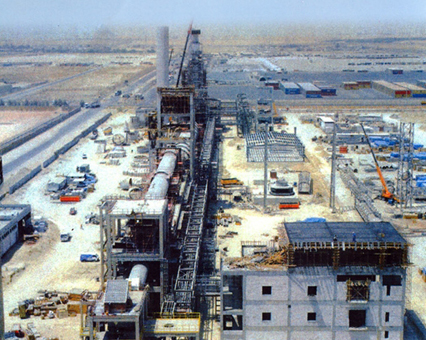
In the energy field, calcined oil coke is used in a number of products such as steel anodes and aluminium anodes. It is used to produce fuel cells, and as a substitute for coal in energy plants. Calcined oil coke is a versatile material with a high moisture content. It can be used in a variety of applications due to its high carbon. The global demand for calcined oil coke is expected to increase over the forecast period, due to a number of factors. These include an increase in construction expenditure and a rise demand for pre-engineered building. The use of petroleum coke in energy is growing globally, as it is cheaper and more environmentally friendly than conventional fossil fuels.
The demand of calcined petrol coke is expected continue to increase in the future due to the increasing construction spending, and a growing demand from the Metal Industry. The growing economies of Asia Pacific also drive growth in the calcined petrol coke market. These countries have a rapid development and are building a lot of roads, bridges and dams. These projects are expected to boost the construction of rebar and other steel-related materials, which will drive the market for calcined petroleum coke in Asia Pacific.

Other drivers for the market for calcined oil coke include the increasing need for fuel-cells in renewable energy technologies as well as the increasing use rebar which is crucial for modern buildings. The growing population of the world is also increasing the demand for electrical and mechanical equipment, which requires steel, a raw material that is used to make calcined petrol coke.
The calcined petrol coke market is dominated primarily by a handful of key players who are constantly adopting new growth strategies to maintain their position on the market. These strategies include new product releases, innovation, and R&D investments. They are also expanding their distribution network in regions where demand is growing. In addition, they are focusing on sustainability to align with changing environmental regulations and customer preferences.
Many rotary calciners are built with waste heat energy recovery systems to capture the heat generated during combustion of VM and fine coke particles carried over from the kiln countercurrent to the coke bed. The heat is then transformed into steam which is used to power a steam turbine generator. The use of waste heat energy is now mandatory for new rotary crushers to improve project profitability.
The calcined coke market continues to grow because more and better smelters are blending shaft and rotary CPC. This is a result of the different porosity and bulk density profiles of the two types of CPC. As a result of the trend towards higher sulfur content in CPC as well as tighter SO2 emission limitations, more calciners are adding SO2 scrubbers to their facilities.
The global market for calcined coke is highly fragmented, with a lot of competition. The market leaders are implementing a wide range of growth strategies to keep their position. They invest heavily in research and development in order to improve the production process, establish distribution networks in regions with strong growth potential, and enter into strategic partnership and collaborations in order to expand their share of the market.

Write a Message